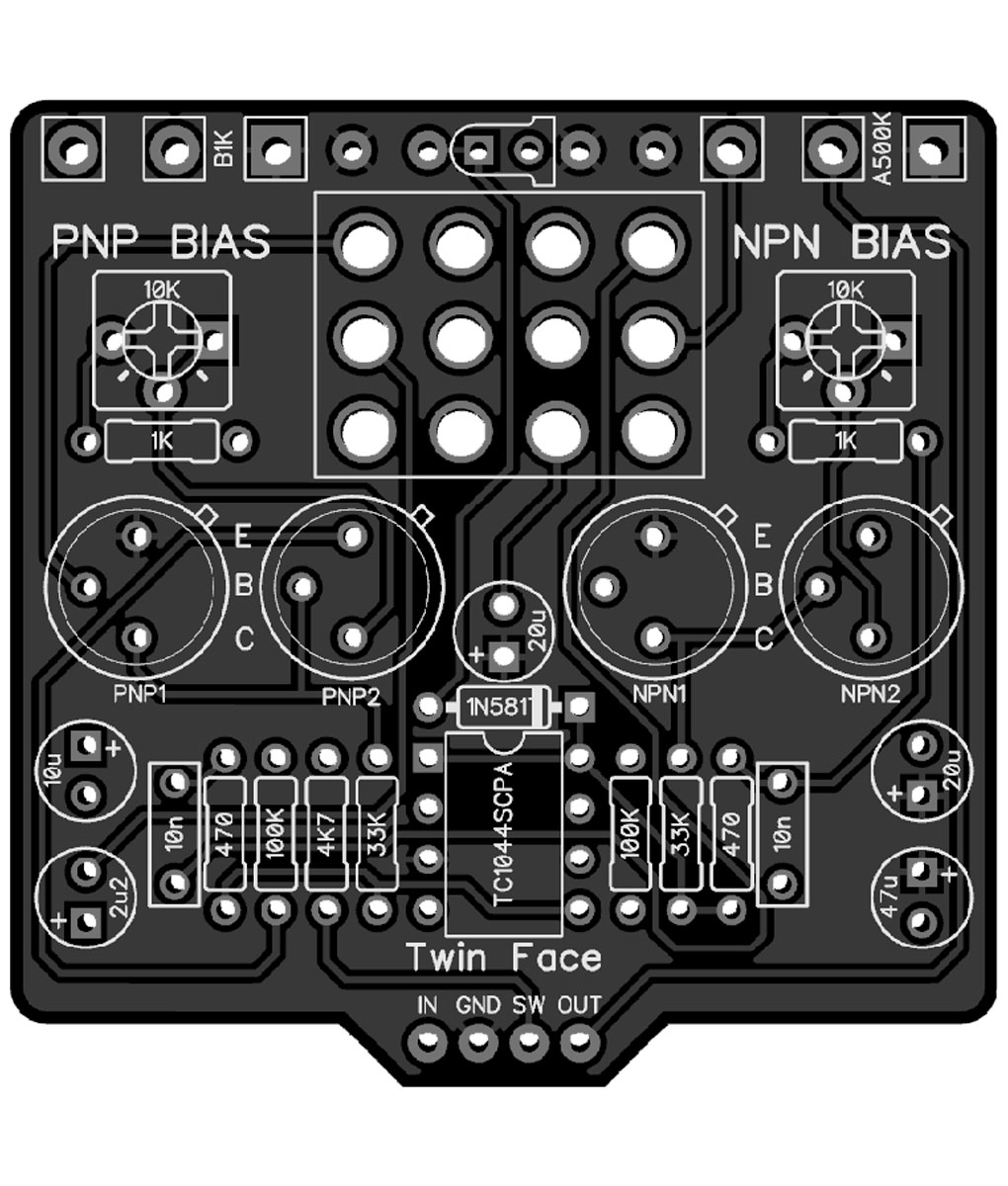So first of all, let's make a few bullets about me:
- I'm a total newbie at building pedals
- I'm a total Pink Floy nuts ! (Hence a David Gilmour wannabe !)
- I know nothing about electronics
- I sometimes over research and over think stuff that I should ignore (I have a doubt I'm not alone !)
So, while I'm waiting for my first 2 PCBs to arrive, a Parasite Wah and a Delegate Compressor (Boneyard), I've been researching the Big Muff and trying to figure out what variant of the Muffing Fuzz I should build to get as close as possible to a DG sound. (I know it's all about the fingers, but still).
My research lead me to conclude that DG was using a Ram's head 1973 violet edition #4. If anyone think differently I will oblige. BTW, the era I target is the obvious late 70's early 80's...
Anyway in that research effort I landed on this diagram about the pedal and tried to figure out what would match:
Ram's Head 1973 Violet #4
So after being told that this should be a Stomp 75, (Thank you Dali and Robert), I made a full analysis of the circuits. Here's the results.

There isn't much difference. Let's see what I found out...
The Obvious:
- The diodes variant is only a matter of old vs modern. From what I can find, a 1N914 and 1N4148 is the same just from different era.
- Transistors: the original 2N5133 was highly inconsistent, replacing with a 2N5088 should provide an equivalent gain without the risk of purchasing a 2N5133 with low gain value.
- Capacitor C9 (C10) is probably so close to make no noticeable difference (3.9 vs 4nF)
The not so obvious:
- R23 (R6) is presenting a interesting variant (560 Ohms vs 1K)
- R4 (R2) is presenting a interesting variant (2.7K vs 4.7K)
As you can guess (see context above) I have no clue what those variants could cause in sound, tone, sustain or whatever...
I'm curious to hear from the forum if they feel that this could lead to a closer sound to the original and what such difference could have on the sound.
Thanks !
Eric
- I'm a total newbie at building pedals
- I'm a total Pink Floy nuts ! (Hence a David Gilmour wannabe !)
- I know nothing about electronics
- I sometimes over research and over think stuff that I should ignore (I have a doubt I'm not alone !)
So, while I'm waiting for my first 2 PCBs to arrive, a Parasite Wah and a Delegate Compressor (Boneyard), I've been researching the Big Muff and trying to figure out what variant of the Muffing Fuzz I should build to get as close as possible to a DG sound. (I know it's all about the fingers, but still).
My research lead me to conclude that DG was using a Ram's head 1973 violet edition #4. If anyone think differently I will oblige. BTW, the era I target is the obvious late 70's early 80's...
Anyway in that research effort I landed on this diagram about the pedal and tried to figure out what would match:
Ram's Head 1973 Violet #4
So after being told that this should be a Stomp 75, (Thank you Dali and Robert), I made a full analysis of the circuits. Here's the results.

There isn't much difference. Let's see what I found out...
The Obvious:
- The diodes variant is only a matter of old vs modern. From what I can find, a 1N914 and 1N4148 is the same just from different era.
- Transistors: the original 2N5133 was highly inconsistent, replacing with a 2N5088 should provide an equivalent gain without the risk of purchasing a 2N5133 with low gain value.
- Capacitor C9 (C10) is probably so close to make no noticeable difference (3.9 vs 4nF)
The not so obvious:
- R23 (R6) is presenting a interesting variant (560 Ohms vs 1K)
- R4 (R2) is presenting a interesting variant (2.7K vs 4.7K)
As you can guess (see context above) I have no clue what those variants could cause in sound, tone, sustain or whatever...
I'm curious to hear from the forum if they feel that this could lead to a closer sound to the original and what such difference could have on the sound.
Thanks !
Eric
Last edited:



